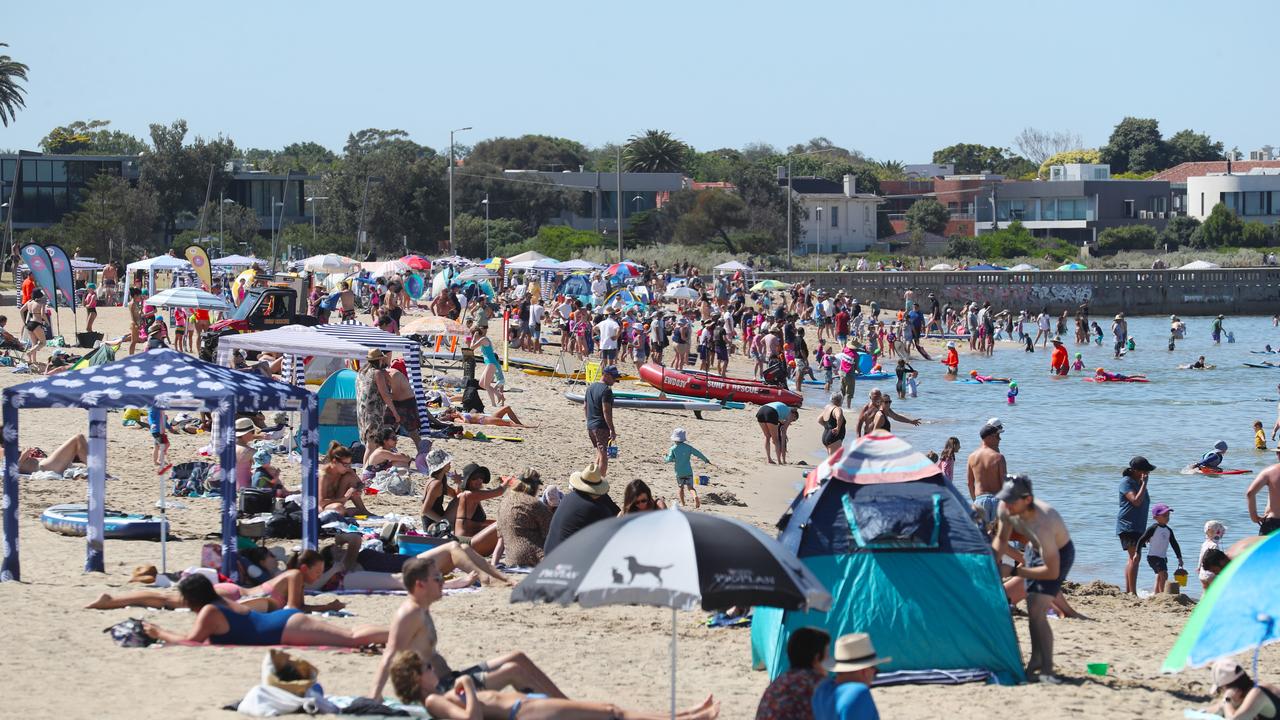Australia’s rapid immigration rates could have a significant impact on politics Down Under in the coming years, with new research heralding a hard slog for the Liberal Party.
Australia has just experienced a record influx of overseas immigrants that has both boosted the economy and made it harder on first homebuyers, mainly in the capital cities, boosting the population by 2.4 per cent almost overnight.
Separate annual data released by the ABS for the 2022-23 financial year showed that Australia’s capital cities grew by an unprecedented 517,000 in the year to 30 June 2023.
Melbourne (167,500) led the nation’s population growth last year, followed by Sydney (146,700).
The economic reality of half a million new residents has now set in, and pundits on both sides of the fence are calling for a solution as Australia’s next generation faces a roadblock amid crippling rent rises.
Economists have been sounding the alarm about Australia’s world-beating immigration levels for months now, with population numbers “soaring out of control” at the same time the housing construction industry faces a crisis.
But Kos Samaras, Director at Red Bridge Group Australia, says the impact is more complex than solely the cost of living.
“They’re having quite a profound impact on the way this country is going to be shaped over the next 10 years,” Mr Samaras, who previously worked as Labor’s Victorian Deputy Campaign Director, told 3AW today.
“We have already got, in Melbourne alone, over 60 per cent of the population have a parent who was born overseas.”
Mr Samaras said the lion’s share of new arrivals in Australia are coming from China, India and the Asia-Pacific. The recent spike in permanent residents has now seen that group make up one seventh of the Aussie population.
Citing research conducted by RedBridge, Mr Samaras said 80 per cent of the Indian diaspora in Victoria were more likely to vote Labor.
“That could change over time, as we saw with the post second World War European migrants,” he said.
“Their parents were very, very clear Labor voters. I would argue their offspring are now, very much like every other Australian, largely swinging voters, but most of them actually vote Liberal.”
“That could change over time, but in the next 10 years, that’s going to be a very difficult problem for the Coalition to be confronting.
“These migrants are very into private house insurance, independent schools, but they do value health and education. They come to this country for those two attributes in particular. That’s a side of politics Labor ‘owns’ quite comfortably, I would say, in the two major states of NSW and Victoria.
“That’s the attraction, but that could change over time.”
Mr Samaras claimed the “look of the major political parties will need to change” as Australia becomes more and more multicultural.
“If you look at Victoria, at the state level, it’s overwhelmingly monocultural. Not many Indian Australians or those from the Asia Pacific in parliament. That over time will need to change.
“We know that particularly younger voters within these new communities are very aware of who represents them.
“So if the Labor Party — who are the ones benefiting from this — keep farming up people from a particular background, it could create some problems,” Mr Samaras said.
The recent election of Vietnamese-born Independent Dai Le in Sydney’s Fowler electorate is proof attitudes are beginning to change, according to Mr Samaras.
“It’s largely a Vietnamese and Arabic community, and that’s where Labor put up Kristina Keneally as their candidate, and she lost a super safe seat.”
Typically, it takes a new migrant “about four years” before they become Australian citizens and enrol to vote, with those from Indian backgrounds more likely to enrol over Chinese-born citizens, who “tend to wait a bit longer”.
Data released last month showed a net increase of 55,330 immigrants in January, the highest January intake ever recorded and more than double the 21,000 recorded last year.
“We smashed that out of the water and all it tells you is net overseas migration surged higher than its peak from mid last year and this 375,000 target is going to be absolutely obliterated,” economist Leith van Onselen told 2GB radio on Saturday.
“It’s just another sign that population numbers are out of control and it’s coming at the same time as housing construction is collapsing.”
Former NSW Premier Bob Carr also slammed Australia for running the highest rate of immigration in the world.
“I’ve been trying to get Australians to understand that we do not need to have the highest rate of immigration, in proportion to our population, in the world,” Mr Carr told Sky News.
“There’s no other country doing this. We’ve got third-world rates of immigration and we don’t need it. I just wonder why this is the only economic model we’ve got – to force feed population growth, to run the highest imaginable immigration intake, and to condemn our big cities to a relentless chase to keep up in terms of infrastructure. We don’t have to do it to guarantee Australia’s prosperity. In fact, it’s a pretty lazy way of running an economy.”
The former Labor Premier, who famously declared in 2000 that Sydney was “full”, said studies of mass migration into the UK showed there was “no economic benefit conferred on the existing population”.
“You could say that those who moved to the UK and found jobs did well, but there was no benefit to the UK itself, there was no benefit to the existing population,” he said.
“And I suspect that similar studies would show that to be true here. If you run remorselessly high immigration decreed by bureaucrats in Canberra year on year, you’re just making it harder for existing people, many of them migrants themselves, to get into home ownership or decent rentals. You’re producing a housing crisis.”
